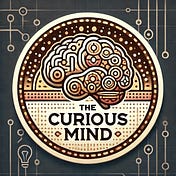
The Curious Mind
The Curious Mind discovers, curates and synthesises the big ideas across markets, technology and the good life.
By subscribing, I agree to Substack’s Terms of Use and acknowledge its Information Collection Notice and Privacy Policy

The Curious Mind discovers, curates and synthesises the big ideas across markets, technology and the good life.